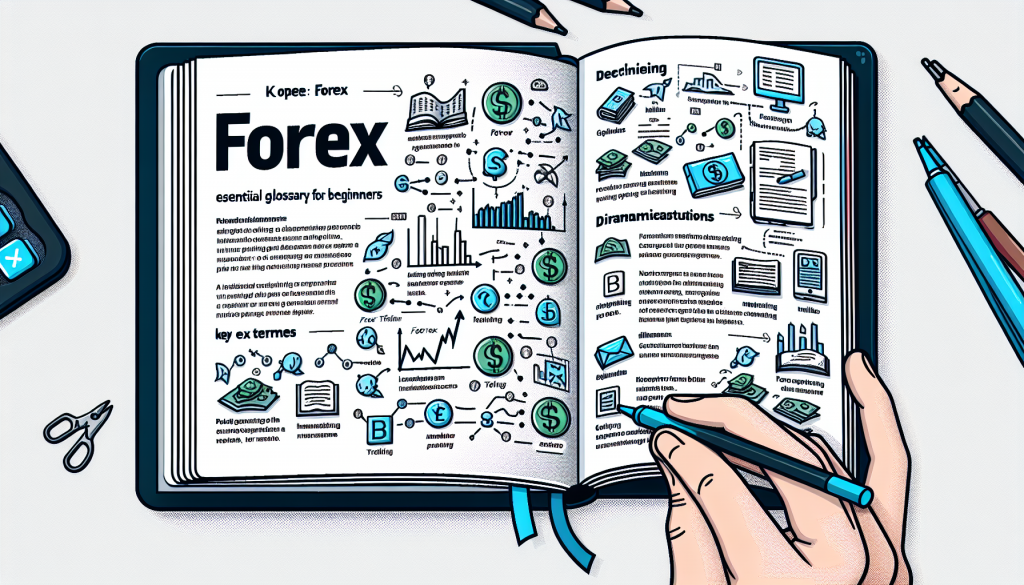Forex Terms: Essential Terms Every Trader Should Know

Are you new to the realm of forex trading? The jargon can be a bit intimidating initially, but understanding key forex terms is vital to becoming a successful trader. As your reliable guide, we have compiled an easy-to-understand glossary of essential terms every trader should know.
The term ‘Forex’ is derived from ‘Foreign Exchange’ and refers to the global marketplace for trading national currencies against one another.
Base Currency: The first currency listed in a forex pair is the base currency. For instance, in GBP/USD, GBP is the base currency.
Quote Currency: Also known as the ‘counter currency’, it’s the second currency listed in a forex pair. In GBP/USD, USD is the quote currency.
Pip: Pip stands for ‘point in percentage’. It’s the smallest change an exchange rate can make, typically the fourth decimal place in a currency pair.
Lot Size: This is a standardised quantity of a financial instrument. In forex trading, lot sizes range from a micro (1,000 units) to a standard lot (100,000 units).
Leverage: Leverage allows traders to open positions larger than their account balance. It’s a double-edged sword as it can amplify both profits and losses.
Margin: This is the amount of money required in a trader’s account to open a trade using leverage.
Spread: The spread is the difference between the buying price (bid) and selling price (ask) of a currency pair.
Call Option: This grants the holder the right to buy a currency pair at a specific price before a certain date.
Put Option: Conversely, a put option gives the holder the right to sell a currency pair at a specific price before a certain date.
Bullish Market: A market condition where the prices are expected to rise is called a bullish market.
Bearish Market: Opposite to a bullish market, a bearish market refers to a condition where prices are expected to fall.
Volatility: Volatility measures the rate of price changes for a currency pair. High volatility indicates significant price swings in a short amount of time.
Liquidity: This is the ability to quickly buy or sell a currency pair without causing significant price movement.
Long Position: When a trader believes the base currency will appreciate, they take a ‘long’ position by buying the currency pair.
Short Position: Conversely, a trader takes a ‘short’ position by selling the currency pair, expecting the base currency to depreciate.
In summary, these crucial forex terms form the foundation of your forex trading journey. By understanding and incorporating these terms into your trading strategy, you can navigate the forex market with greater confidence and precision.
Remember, the forex market is a volatile and complex landscape. Take your time to familiarise yourself with these terms and apply them in practice sessions before diving into live trading.
If you want to learn to trade the way professionals do check out our CPD Certified Mini MBA Program in Applied Professional Forex Trading.

